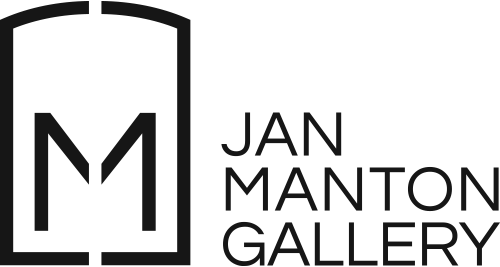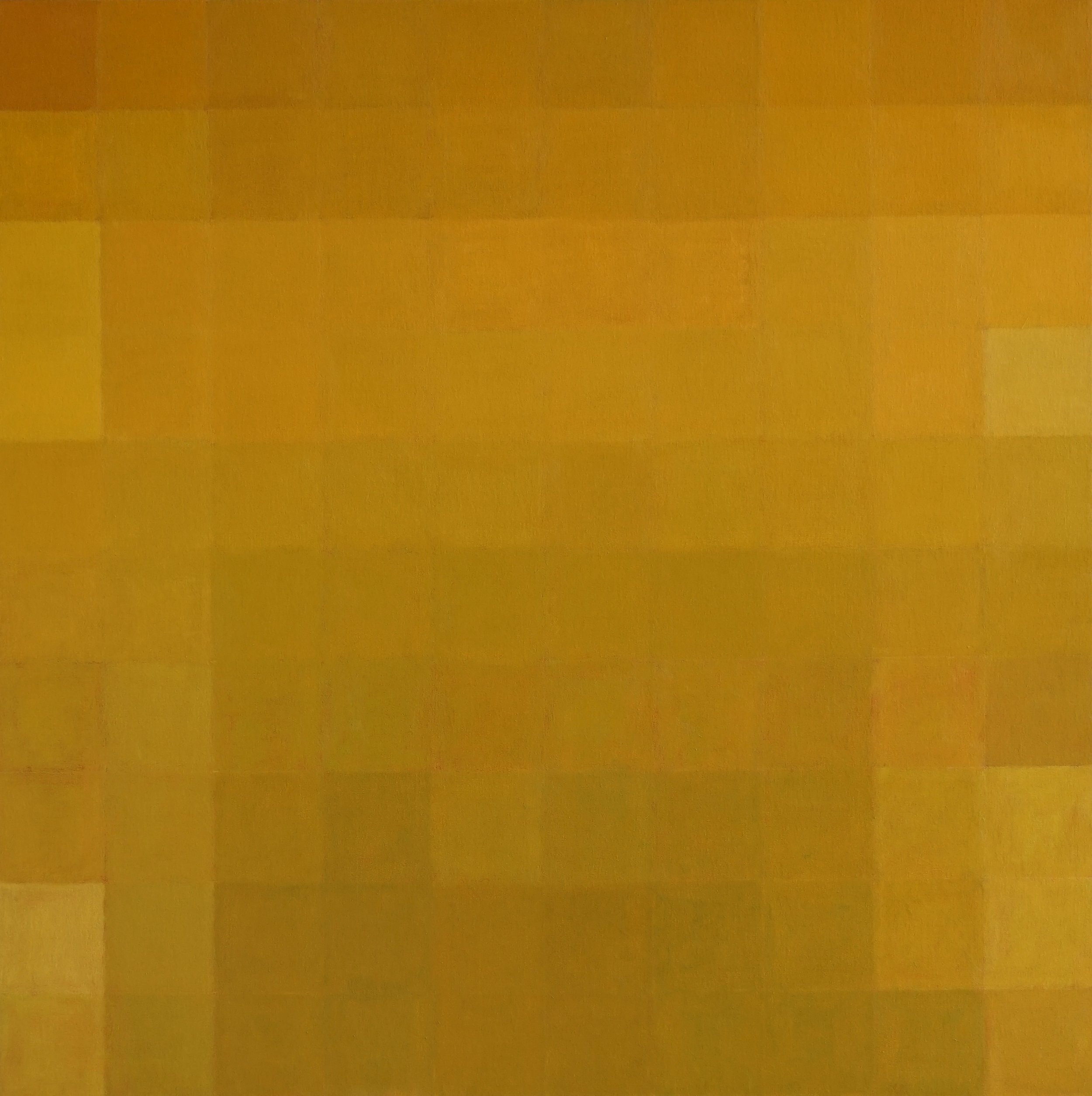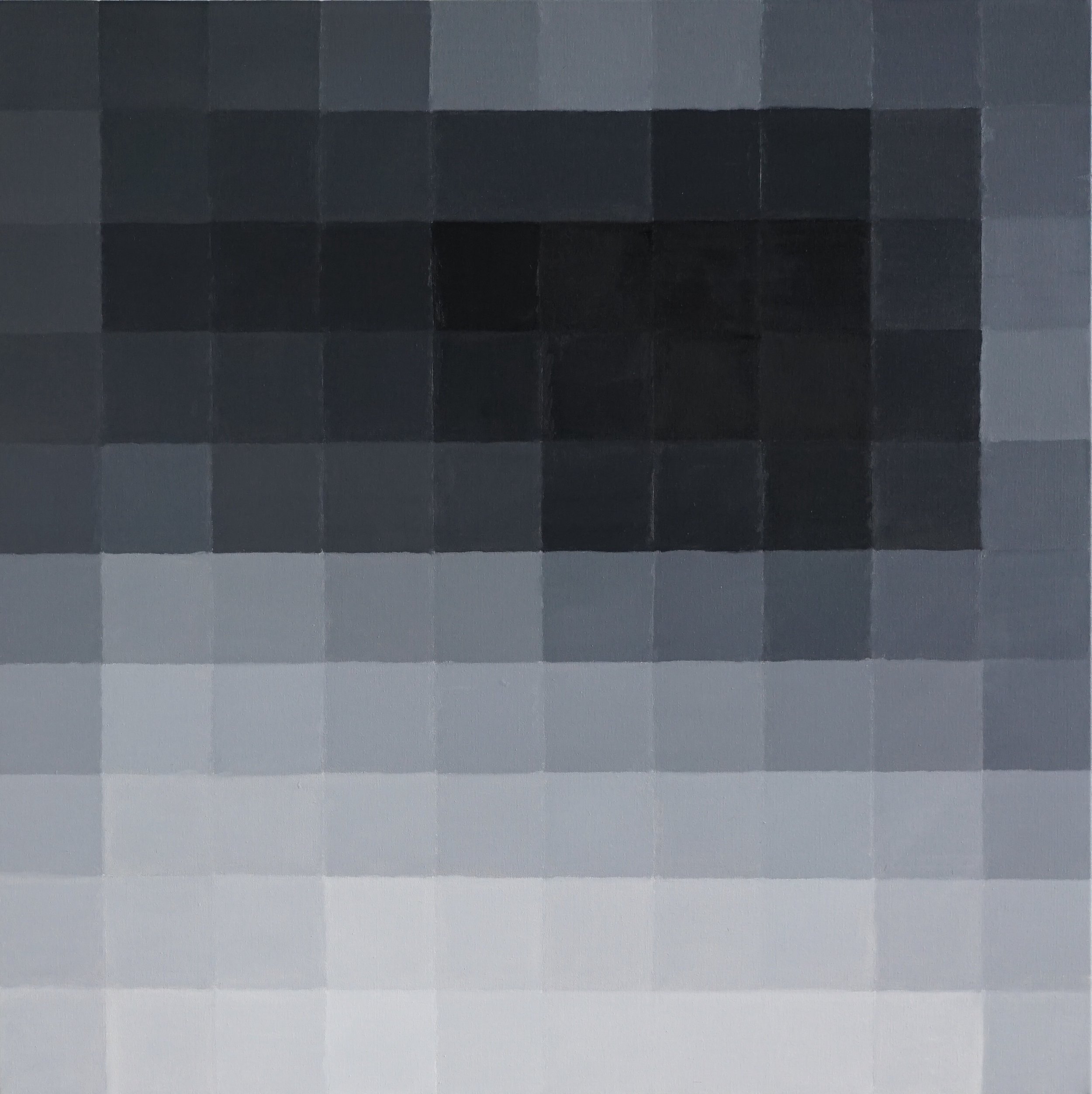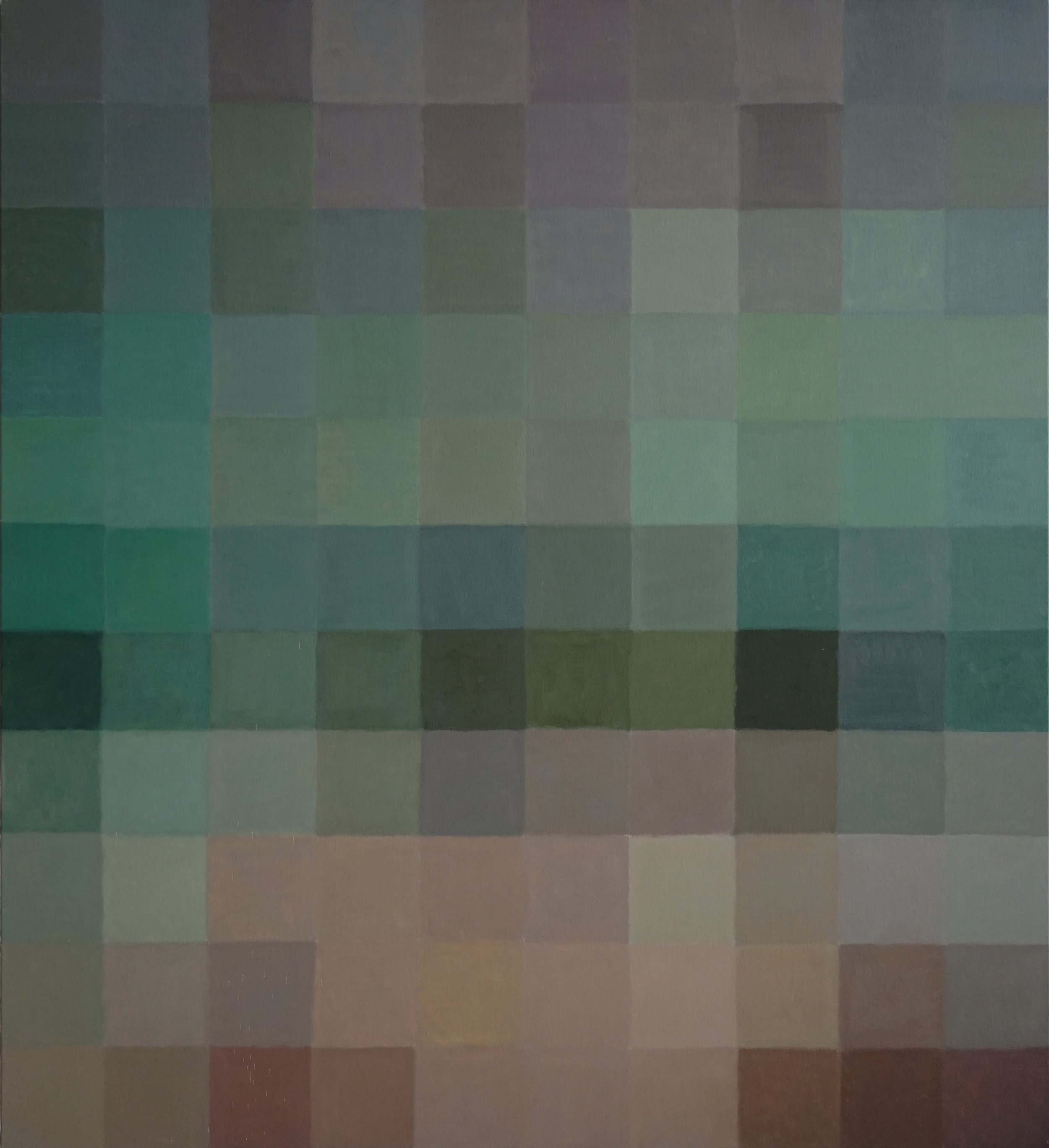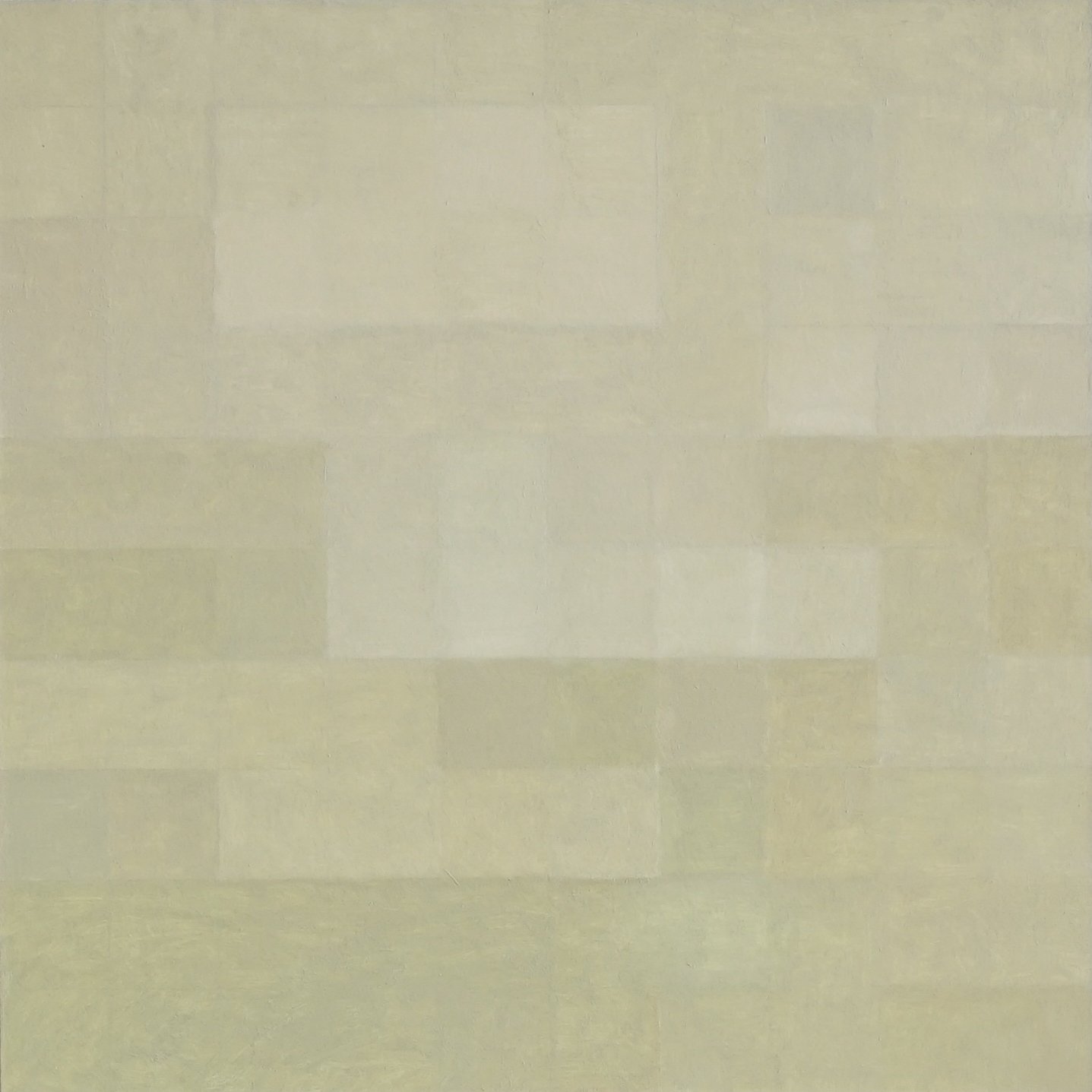From the Studio - Interview with Joseph Daws | 28.10.21
Jan Manton Gallery rang Joseph Daws in the lead up to his upcoming solo exhibition Resolution, 10 - 28 November 2021. During our conversation, Daws spoke about his latest series of works, including his newfound use of heavily pixelated imagery and their obscured relationship between seeing and understanding images in the digital age.
Gallery Assistant Zali Matthews sat on the phone with Daws to learn more…
Zali Matthews (ZM): Hi Joe, thank you for taking the time to chat about your work today! Your upcoming exhibition Resolution consists of large, pixelated paintings, which differs significantly from your previous landscapes and organic, abstract works. Can you tell me a bit more about your thought process behind moving towards pixelated imagery?
Joseph Daws (JD): Hi Zali, and thank you, it's my pleasure. My aim was to be more clear with what I was doing – as you said, not so organic, not so much embracing chance and the process. I wanted to be more efficient. It takes quite a lot of time to paint by process, and I’ve found that I don’t have a lot of time to paint that way at the moment. And for a while I’ve been wanting to work with the grid. I’ve tackled it in the past, but in more of a tessellated pattern.
ZM: I've seen some of your previous abstract works, which I would described as being 'dappled'. There's a few that are certainly quite organic. So it's very interesting seeing you take abstraction down such a different path.
JD: In hindsight, these new works share a common thread with those earlier ‘dappled’ works you mention, which were a couple of bodies of work ago. They were large scale paintings made from small scale monoprints, and the monoprints were made using controlled chance. This change in scale and removal from the initial state would alter how we read the image. These new paintings work in a similar manner – I have been creating small scale digital studies by zooming into images and taking 10 x 10-pixel bites out of them, modifying them to my liking, then painting them in a larger format.
ZM: So, you're taking samples from images?
JD: Yes. I'm removing myself from the process a bit more, but I'm still the one taking the sample, and I'm choosing the composition. And in choosing samples, I get an interesting sort of subtle gradation of colour and tone, and of visual depth and space.
ZM: Are you using any images in particular?
JD: No, all sorts. I collect images for reference all the time and play around with them.
ZM: It’s very interesting seeing your works in a pixelated format, because pixels are such a classic new motif of the digital age. They’re so often used to conceal or abstract images or hide visual information. I was wondering whether any of that discourse around pixels comes into your work?
JD: Well, just by its very nature it does. That's what it is. I'm not pixelating an image, like in censorship. But it's that same sort of feeling where you're looking at something, but you can't see what it is. There’s a fair bit of censorship going around, one way or another. I'm interested in all those aspects of image making – what references do they make? And it’s a very digital structure that has all these connotations, that’s the rules of the image.
ZM: It seems like you're interrogating the actual basis of the image itself, and examining how images are constructed in the digital age. Do you find that you're interested in comparing the differences between digital and analogue images?
JD: It is not so much comparing as using the differences to subtly subvert the way we read the imagery of painting, like a dislocation that works to breaks our habitual manner of looking.
ZM: Would you say your interest lies more in the aesthetics of the pixels, and the way in which those colour variations create a beautiful image, rather than thinking about what the pixels might mean or what they might refer to?
JD: Well, that's part of it, of course. Fundamentally, it’s about how the artwork operates. Allowing the works to have the openness to connect with a wider discourse is an important aspect. I'm not going to say what it is or isn't. And if you look at the works, they're not trying to represent an object in pictorial space. So it's the structure of the work itself that does the referencing.
ZM: Yeah, your works almost hint towards something, but they aren't clear enough for you to get a sense of what they might be hinting towards. The only hint is in the colour, and even then, that's not a good indication. There’s this lovely, teasing element to it – you almost know what this might be, but you can’t quite discern it, and so you have to relinquish that control, that desire to know and understand what you’re seeing.
JD: I don't like directing people how to see an image or a painting. I really like that divide between how we try to make sense of things. That’s the zone I try to get to with most of my abstract painting, that area where it’s not clearly spelled out, and to move away from the mentality that this is something natural that has been abstracted.
ZM: In a world that’s so filled with images and visual information, everyone’s always so used to looking at something and understanding what it means. It’s refreshing to be able to not have to think about what the work is about. I also want to repeat your idea of relinquishing control. Is your process of sourcing pixels a part of this?
JD: Yes, it is. I do some ceramics as well, which I like, because it involves a sort of alchemy where you can make maybe 100 bowls, glaze and fire them, and only have a few of them be really special. That sense of chance is something that sits beyond me, and is what makes it special. It’s a sort of coincidence or confluence of things that come together.
I don’t know if it’s a deferral of responsibility as an artist, but I quite often try to go beyond myself in the process. It feels more creative that way. And, generally, I think I arrive at things that are better than the original idea that started my inquiry or process to begin with. When I started these pixelated paintings, I was making digital pixel art in a simple 32-square format. I was doing it manually using software, but the results were too familiar. Using samples in this case was the solution. I like losing myself in the process, as well as starting anew and using different processes.
ZM: This reminds me of your first comment in the interview, about efficiency. I think it’s so true that in your previous abstract works and landscapes, you had to put so much of yourself into them, which is a lot to ask of yourself. This feels like a way to interrupt that process and look outwards. What do you think about that?
JD: Yes, that is exactly what it is. However, these works have also satisfied some more practical needs in terms of my painting practice. They have been enjoyable because I am doing the sorts of things I used to do when I was painting plein air – mixing colours to suit, rather than working with colour loosely in my older abstract works. Here, I’m mixing colour in fine gradations. Even when you’re painting plein air, it’s not so intentionally gradated as these works. I’ve actually really enjoyed that. It’s like a class in mixing colour.
ZM: Has that been a meditative process for you?
JD: Yes, it has. Painting is always like that to some degree. I also listen to podcasts and interviews while I am painting, so I am always trying to learn one way or another.
ZM: It must be lovely to go back to basics and enjoy colour again.
JD: Yes, colour and tone. Most of these works are based on just 10 x 10 pixels. So the whole process is quite simple. But there’s so much variety and complexity within that. I’m enjoying limiting the rules of the painting.
ZM: You’ve given yourself quite strict guidelines for these works. It must be very freeing, to have that space to concentrate on the colour and on the mixing instead of having to think: what’s the composition going to look like? Where am I going to place everything?
JD: It's nice for a change. It's not something I'm going to do forever, but it's good for now. And I can already feel that I would probably like to start loosening the whole process up a bit and not be so rigid in that structure. That feels like a natural progression.
Joseph Daws Resolution will be showing at Jan Manton Gallery from 10 - 28 November, 2021
Interview conducted Zali Matthews. Edited by Zali Matthews. Images by Joseph Daws. From the Studio content courtesy of Jan Manton Gallery and Joseph Daws.
